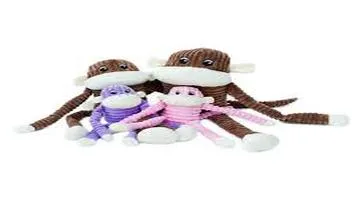T-Shirts - A Wardrobe Staple
T-shirts are versatile and essential garments in modern wardrobes, celebrated for their comfort and simplicity. Typically crafted from soft, breathable materials like cotton or blends, they are designed with short sleeves and a round neckline, making them a go-to choice for casual wear. T-shirts transcend age, gender, and style preferences, available in a vast array of colors, patterns, and designs, from plain and minimalist to bold and graphic. They serve as a canvas for self-expression, often featuring logos, slogans, or artwork that reflect individual personalities or affiliations. Easy to pair with jeans, shorts, or skirts, T-shirts are perfect for layering or wearing alone, providing effortless style and comfort for everyday activities, leisure, or even as sleepwear.

Introduction
T-shirts are arguably one of the most universally beloved and versatile pieces of clothing in modern wardrobes. They come in a myriad of styles, fabrics, and designs, catering to a wide range of preferences and occasions. As someone who has worn and collected T-shirts for years, I can confidently say that their appeal lies in their comfort, ease of wear, and the endless possibilities for self-expression they offer.
Material and Fabric
The fabric of a T-shirt significantly influences its comfort, durability, and overall feel. The most common material is cotton, prized for its softness, breathability, and natural fiber. Cotton T-shirts are ideal for everyday wear, particularly in warmer climates where their moisture-wicking properties help keep you cool.
Organic cotton T-shirts have gained popularity due to their eco-friendly production processes. These T-shirts are made from cotton grown without synthetic pesticides or fertilizers, appealing to environmentally conscious consumers. They tend to be slightly more expensive, but many find the trade-off worth it for the added sustainability.
Blends of cotton and synthetic fibers, such as polyester, have their own advantages. These T-shirts are usually more durable and less prone to shrinking or wrinkling. They also dry faster, making them great choices for athletic wear. However, they may not offer the same level of breathability and softness as pure cotton.
For those looking for luxury, T-shirts made from materials like pima cotton, modal, or bamboo offer an incredibly soft and smooth feel. These fabrics tend to be more expensive but are often worth the investment for their comfort and longevity.
Fit and Style
The fit of a T-shirt can drastically alter its look and feel. There are several common fits to consider:
1. Classic Fit: This is a relaxed fit that provides ample room without being baggy. It's a versatile choice that works well for most body types and occasions.
2. Slim Fit: As the name suggests, slim fit T-shirts are cut closer to the body. They offer a more tailored look and are ideal for those who prefer a modern, fitted appearance.
3. Oversized Fit: Popular in streetwear, oversized T-shirts provide a relaxed, laid-back vibe. They're perfect for layering and can add an element of style to casual outfits.
The neckline is another crucial aspect. Crew neck T-shirts are the most common and versatile, suitable for layering or wearing on their own. V-neck T-shirts offer a slightly more formal and elongating look, while scoop necks provide a more relaxed and casual appearance.
Design and Versatility
T-shirts are a blank canvas for design, making them an excellent medium for self-expression. From solid colors and stripes to graphic prints and logos, the design options are virtually limitless. Band T-shirts, for example, allow fans to showcase their musical tastes, while T-shirts with witty slogans can reflect a person's sense of humor.
Graphic T-shirts have become a cultural staple, often used to convey messages, support causes, or simply display art. Brands and designers frequently collaborate with artists to create limited-edition pieces, turning a simple T-shirt into a collectible item.
Solid color T-shirts, on the other hand, are incredibly versatile and can be dressed up or down. A plain white T-shirt, for instance, can be paired with jeans for a classic casual look, or worn under a blazer for a more polished appearance.
Durability and Care
The longevity of a T-shirt depends on its material and how well it is cared for. High-quality T-shirts made from durable fabrics can last for years if properly maintained. Washing them in cold water, avoiding harsh detergents, and air-drying whenever possible can help preserve their color and shape.
Some T-shirts are prone to pilling, especially those made from lower-quality fabrics or blends. Investing in a fabric shaver can help keep them looking fresh. It's also worth noting that T-shirts with printed designs may require extra care to prevent the graphics from cracking or fading.
Price Point
T-shirts are available at a wide range of price points, from budget-friendly options to high-end designer pieces. While it's tempting to stock up on cheap T-shirts, they often don't last as long or feel as comfortable as their higher-quality counterparts. Investing in a few well-made T-shirts can be more cost-effective in the long run.
Conclusion
In conclusion, T-shirts are an essential and timeless piece of clothing that everyone should have in their wardrobe. Their comfort, versatility, and endless design possibilities make them suitable for nearly any occasion. Whether you prefer the softness of organic cotton, the durability of a cotton-poly blend, or the luxury of pima cotton, there's a T-shirt out there for everyone. Taking the time to find the right fit, material, and design can elevate your everyday attire and provide a reliable go-to option for years to come.






